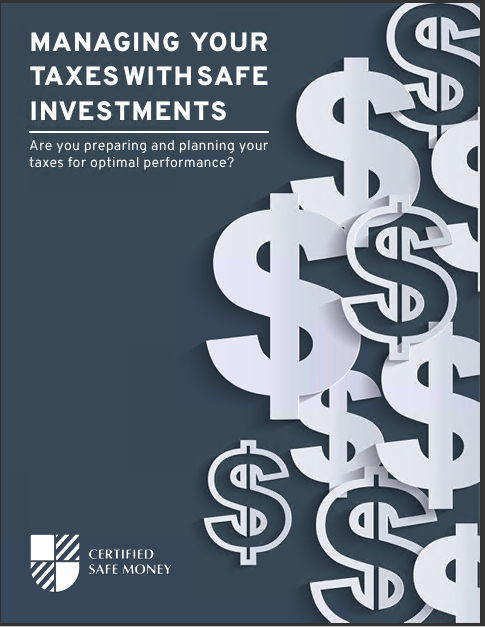Annuity Basics Understanding Annuity Basics
Today’s (and tomorrow’s) retirees face challenges that are far different from those in past generations – namely, knowing whether or not they will have enough income to last for the rest of their lives. With corporate pensions disappearing and a shaky Social Security program, having a good understanding of annuity basics can help you to create and control your own “personal pension” income generator.
What are Annuities and How Do They Work?
In their most basic sense, annuities are contractual agreements between an individual and an insurance company. They represent a promise where, in return for either a lump sum or multiple contributions from the individual, the insurer will pay out a regular income stream either for a set period of time or even for the remainder of the income recipient’s (annuitant’s) lifetime – regardless of how long it is needed. Annuities are often referred to as insurance for your income, because unlike stocks, bonds, mutual funds, or CDs, an annuity can provide you with guaranteed retirement income in any type of market, and regardless of what happens in the economy. An annuity can also ensure that you won’t outlive your money.
Find the most credible, highest-rated Safe Money advisors in your area.
If you are nearing retirement or already retired, you should consider safe money because your future is too bright to risk. function maxLengthCheck(object) { if (object.value.length > object.max.length) object.value = object.value.slice(0, object.max.length) } Are you a safe money expert?
Types of Annuities
There are several different categories and types of annuities. For example, an annuity can be either immediate or deferred. An immediate annuity will begin paying income immediately after or within 12 months of the contribution being made. Many retirees purchase immediate annuities and fund them by “rolling over” money from an employer-sponsored 401(k) or other retirement account or money that is in an IRA (Individual Retirement Account). A deferred annuity will allow an individual to make either a single contribution or make multiple contributions over time. While the funds are in the account, they are allowed to grow tax-deferred, which means that there is no tax due on the gain until the time of withdrawal. This tax-advantaged growth allows funds to grow and compound exponentially over time, so it can increase more – and more quickly – than funds that are inside of a taxable investment account. Deferred annuities have two distinct “phases.” These are accumulation and distribution. Depending on the type of annuity, the account’s funds may grow, either based on the crediting of interest or by tracking an underlying investment or market index. In the distribution phase, the annuity is converted to an income stream. This is referred to as annuitization. There are several different options available for how to receive income from an annuity.
Fixed, Index, and Variable Annuities
Annuity types can be pared down even further, based on how the return on the funds inside the account is determined. For example, fixed annuities are credited with a fixed amount of interest. (The rate may, however, be adjusted or “reset” by the insurance company after a certain period of time has elapsed). One of the key features of how fixed annuities work is the safety of the principal they can provide. So, even though the interest rate on a fixed annuity is oftentimes relatively low, knowing that the principal is safe can be a nice “tradeoff.” A fixed index annuity is one of the types of fixed annuities. The way that interest is credited differs on a fixed index annuity in that it tracks the performance of an underlying market index such as the SP 500. When the index is up in a given time period (such as a month or a year), the account will be credited with a return, typically up to a certain “cap” or maximum. However, if the underlying index is down in a given period, the annuity is not credited with a loss. Rather, it will instead earn 0% for that time frame. This principal protection in any type of market allows fixed index annuities to continue building upon gains but without making up for past losses to get back to even. Variable annuities can also provide the opportunity to earn a market-related return. They do so by tracking various equities, such as mutual funds. The annuity is not directly invested in the market, though, but rather it tracks investments via the insurance company’s sub-accounts. It is important to keep in mind that, while variable annuities could earn a high return, the opposite is also true. In this case, if the tracked investment(s) perform poorly, there is a risk of loss in the account. Because variable annuities are considered securities, a prospectus must be presented to those considering this type of investment. Many annuities – including fixed, fixed index, and variable – may also include additional features. Depending on the annuity, these could include:
- Death Benefit – If the annuitant (income recipient) dies before all of the initial contributions have been returned, a death benefit may be paid out to a named beneficiary. Unlike a life insurance death benefit payment, annuity death benefits are not received income tax-free. The beneficiary may opt to receive one single lump sum, or alternatively, to receive the death benefit as a series of multiple payments.
- Long-Term Care Waiver – If the annuitant must reside in a nursing home for at least a certain period of time (typically 90 days or more), he or she may be able to access some – or even all – of the funds in the annuity without having to pay a withdrawal charge.
- Terminal Illness Waiver – Likewise, they may tap into the principal penalty-free if the annuitant is diagnosed with a terminal illness.
- Disability Waiver – A disability rider allows the annuitant to access funds penalty-free if they become disabled and cannot work for a set period of time.
- Unemployment Waiver – Similarly, if the annuitant is unemployed, funds may be accessed from the annuity without penalty.
- Cost of Living / Inflation Rider – In order to help income from the annuity keep pace with future inflation, the payment may rise over time. (In this case, the regular monthly or yearly payments from the annuity will typically start out lower than if the annuity did not have an inflation rider attached).
- Guaranteed Income Rider – Some variable and fixed index annuities offer the option to add a guaranteed income rider. As its name implies, this type of rider provides a guaranteed amount of income or withdrawal, regardless of underlying market performance.
Annuity Income Options
Most annuities will provide several different income options to choose from. That way, income may be better “customized” to fit with cash flow needs. The most common annuity income options include:
- Period Certain – The period certain income option will pay income for a set time period, such as ten years or 20 years. If the annuitant passes away before the time has elapsed, income will continue being paid to a named beneficiary until the end of the period. At that point, the income from the annuity will stop.
- Life Only – The life-only annuity income option will pay income throughout the remainder of the annuitant’s life. This is the case, regardless of how long he or she lives.
- Life Only with Period Certain – The life only with period certain option combines the life only and period certain alternatives. For instance, income will be paid to the annuitant for the rest of his or her life. But, if he or she passes away before a certain period of time, such as 10 or 20 years, income will continue for the remainder of that time to a beneficiary.
- Joint and Survivor – The joint and survivor option may be used for couples, or in some cases, with two unrelated individuals who want to make sure that both individuals can count on income for the rest of their lives. Depending on the option that is chosen, the dollar amount of income may be reduced after the first individual’s passing.
It is not mandatory that an individual annuitize or convert the annuity to an income stream in order to access the funds. For instance, a lump sum withdrawal may be made. It is important to be careful when going this route, though, as taxes will be due for the year of the withdrawal.
What Fees are Associated with Annuities?
Although annuities have often been accused of having high fees, this is not necessarily the case – depending on the annuity and whether or not you have any optional features attached to the annuity, such as riders. In general, each rider may add somewhere in the neighborhood of 0.5 to 1% per year in fees. Variable annuities typically have more fees than other types of annuities. One reason for this is the underlying investments they track. Typically, if you own a variable annuity, you will likely incur the following charges and fees:
- Up-front agent or broker commission
- Administrative charge
- Investment management fees
- Mortality and Expense (ME) fees
Most all annuities will also have surrender fees. These are charged if you surrender the annuity contract or even if you take “too much” money out of the annuity in a given year, during the surrender period. Surrender periods will usually last between 3 and 7 years, although there are some cases where the surrender period lasts for ten or more years. The charge for accessing funds – usually more than 10% of the contract value – will usually decrease over time until it eventually reaches 0%. On top of a surrender charge, if you are under the age of 59 when you make an annuity withdrawal, you could also be responsible for paying an additional 10% IRS “early withdrawal” fee. With that in mind, annuities should always be considered a long-term financial commitment and, as such, funded with money that you don’t intend on using for emergencies or other obligations in the near future.
Important Annuity Terms
Before buying an annuity, there are some key terms that you should be familiar with. Knowing these can help you better understand how the annuity may – or may not – perform over the short- and long-term. Some common annuity terms include:
Current Interest Rate The current interest rate is the rate that the insurance carrier will credit your annuity for a specific time, during which the insurer guarantees that the rate will not change. This initial rate may be higher than the interest rates you receive in the future.
Minimum Guaranteed Rate Many annuities guarantee a rate below which the account will never fall. So, the minimum guaranteed rate is the lowest rate that the annuity will earn. Typically, this rate is stated in the contract.
Free Look Period Insurance contracts – including annuities – will typically offer a “free look” period. This is a certain number of days after you receive your policy when you can return it and receive a full refund of the premium you paid in. (The length of the free look period can be dependent on the state, as well as the insurance company offering the policy or annuity. Free look periods usually range between 10 and 30 days).
Annuitize Annuitize means to “convert into an annuity.” The plan will be annuitized with an annuity when its accumulated value is converted into an income stream.
Bailout Provision Should the interest rate on a fixed annuity fall below a certain specified rate, funds may be withdrawn free of any surrender charges if the annuity includes a bailout provision.
1035 Exchange A 1035 exchange is a tax-free exchange of one annuity for another. (This type of exchange can also be used for “swapping” one life insurance policy for another or exchanging a life insurance policy for an annuity.)
Is an Annuity Right for You?
Annuities can provide a long list of benefits. But, that doesn’t mean that they are the right fit for everyone. So, before committing to an annuity, it is important to make sure that you consider your financial objectives, risk tolerance, and anticipated retirement time frame. Just like with any other financial vehicle, there is no such thing as a one-size-fits-all annuity. So, even if an annuity sounds like an ideal fit, comparing several different annuity options can help you to narrow down the best alternatives. It is recommended that you work with an annuity or retirement financial advisor before you purchase an annuity. That way, you can get all of your questions answered, and you will be better able to anticipate how the annuity will perform over time.













